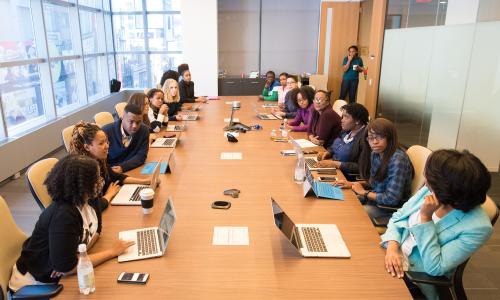Contributing to the news is a crucial means of affecting public policy and getting traction on an issue. However, scientific research and media work aren’t always a perfect fit. The speed of the media world, and the small amount of space journalists have to cover complex scientific issues, can make the interaction between scientists and the press challenging. Yet scientific expertise has never been in higher demand in the mainstream media. And for scientists, the most effective means of bringing their expertise and convictions to the public is by working with the media.
Below are tips on meeting with an editorial board, a simple and effective way to get a message to both the public and policy makers. UCS has additional information for scientists seeking to engage the news media—please see Letters to the Editor and Writing Op-Eds.
Meet with an editorial board or writer
The purposes of editorials are to recommend a plan of action, to call public attention to an issue or program, or to evaluate the actions of public officials or governments. Editorial boards of newspapers are often available and willing to meet with responsible people who have something to say that is relevant to the community. If you would like to meet with an editorial board or an editorial writer, your message and the editorial support you request should be consistent with those purposes.
Tips
-
Write a letter. To approach an editorial board, send an email requesting a meeting; the email should briefly describe the issue you are concerned about and why the editorial board should know about the issue or your point of view on it. Keep your note succinct and include links to material, including relevant and reputable data, that you cite. Follow up with a phone call to see if the board, or an individual, is interested in meeting with you. You can usually find staff contact information on the outlet’s website. If editorial board members or writers are not listed, look for someone who is identified as an editorial or opinion editor. If you have trouble finding a contact, outlets usually have a “contact us” form.
-
Prepare in advance. Prior to the meeting, organize the points you plan to make. If you plan to share new information or details, collect supporting material that is concise and understandable, but don’t overdo it. Four to five pieces of information are usually enough. Any more than that and they may not read any of it. You should be prepared to explain who is being harmed by the issue or would benefit from your proposed solutions (naming local audiences if it is a local newspaper), and what call to action the editorial should make. You should be able to explain why the outlet’s readers should care about the issue. If possible, tie the topic to something newsworthy—ideally a story that has been recently covered by the newspaper or one that will play out that the paper should cover. Consider bringing other community members with you who support your point of view but would provide a different perspective or expertise. Be prepared to cite as many local angles as possible.
-
Be sure to follow up. Follow up the meeting not only with whatever additional information you promised to provide, but also with a thank-you note to the editorial board members with whom you met.
